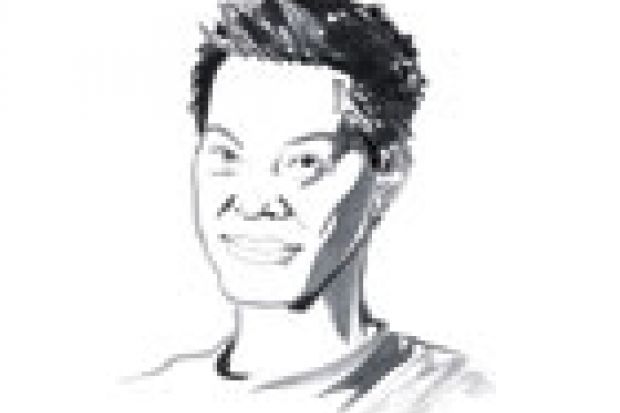“Watch out Kev!” cries Luke the cameraman. It is dark, we’re at the end of a long day’s filming somewhere in the US and I can’t quite understand why Luke is shouting at me. This is the fourth day of filming. We’ve just finished a very moving interview with a guy who has an artificial heart and I’m in full Ponder Mode…or at least I would be if the cameraman didn’t keep shouting at me.
“Look out!” he shouts again.
This is me wrestling with the double-edged sword that is television, the most efficient way to communicate science to a wider audience. It is, of course, also potentially the fastest way to lose your last vestige of self-respect.
I’m still confused by the shouting. Perhaps Luke’s cries are telling me to “look out” for my day job, my real career, the place I have to go to when all of this is filmed and done.
You form a bond with the film crew if you spend enough time on the road together and it’s touching to see that they’ve got my wider professional welfare in mind.
About half a second later I find myself rolling around on the floor, clutching my bleeding scalp. It is only then that I understand what Luke has actually been trying to warn me about: the ridiculously sharp corner of the open door of the car boot, a corner that I have just walked straight into. This is how fast your fortunes can change in the world of TV.
Actually, the film crew I’m with have been utterly brilliant. Whenever I query a fact they slap me in the face with a peer-reviewed journal article. Whenever I’m even remotely in danger of behaving like a proper presenter, they take the piss out of me so relentlessly that I’m instantly reminded that I am but an ubergeek guest appearing, very temporarily, in telly land. It’s the way it should be. It’s not the way it always is.
Recently, a friend of mine was approached by a production company looking to make a film.
“It’s called The Real X-Men,” its representative said. “It’s about how we might one day evolve superpowers.”
Over time my geneticist mate, who has tangled with the chew-you-up-and-spit-you-out world of TV on more than one occasion, has learned not to be shocked by an eager researcher’s opening gambit.
If you hold your nerve, he has discovered, there’s a chance you might steer the whole discussion into semi-credible territory.
“What I’d like to know,” continued the Researcher Dude, “is how long before humankind evolves the ability to fly?”
Still unfazed, my friend embarked upon a gentle explanation of how evolution really works, trotting out an amazing story, billions of years in the making, of moral outrage and the descent of man before throwing in the dramatic epigenetic twist.
“So you see,” he said to the researcher, “it’s amazing. Lamarck wasn’t so wrong after all.”
Researcher Dude nodded eagerly, smiling and scribbling furiously throughout.
“Yeah! Yeah! Amazing! Amazing!” he said, pausing to let it all sink in. “So about this flying humans thing. How long do you reckon before we’re there? Three hundred years?”
I’m thinking of this tale of woe as the crew drive me to hospital. I’m thinking about how lucky I am to be hooked up with these people; a crew who can pull incredible ideas together, put them to pictures and sound and then stick me in the middle.
It is, of course, a deeply imperfect art, with the needs of the story often trumping detail, with the focus being led more by what the viewer needs to see than the amazing things that you’ve read. But this, by a long chalk, is still the best way to communicate science to the widest possible audience. And that’s the choice. Either you communicate or you don’t.
I wouldn’t want to make it sound too worthy. It’s fun, sometimes lots and lots of fun; that’s mostly why anyone does it. But as I lie on the hospital trolley in the ER, waiting for someone to stick some staples in my head, I’m reminded that in this world, like all others, things don’t always go completely according to plan.
It’s not a game for control freaks. In all, something like 25 hours of film footage gets edited down into a 59-minute programme. And so sometimes the film you had in your head isn’t the one that finally goes out. There’s got to be a lot of trust and even then in the end it’s always a leap of faith.
A day and a plane ride later, we’re halfway across the continent filming again. I’ve had eight staples in my head and a lot of TLC from the crew. In fact, for the past day there’s been so much fussing over me that I’ve finally begun to feel like a real TV presenter.
I’m sitting in a cardiothoracic surgeon’s sports car trying to convince Sophie the director that, for the metaphor to work, there should be a shot of me at the wheel screeching away into the distance.
“What about it?” asks Luke.
“You’ve got to be kidding?” says Sophie. “This is a guy who manages to injure himself walking into stationary vehicles. No way am I letting him drive someone else’s sports car.”
And just as quickly as that, normal service is resumed.
Register to continue
Why register?
- Registration is free and only takes a moment
- Once registered, you can read 3 articles a month
- Sign up for our newsletter
Subscribe
Or subscribe for unlimited access to:
- Unlimited access to news, views, insights & reviews
- Digital editions
- Digital access to THE’s university and college rankings analysis
Already registered or a current subscriber? Login
